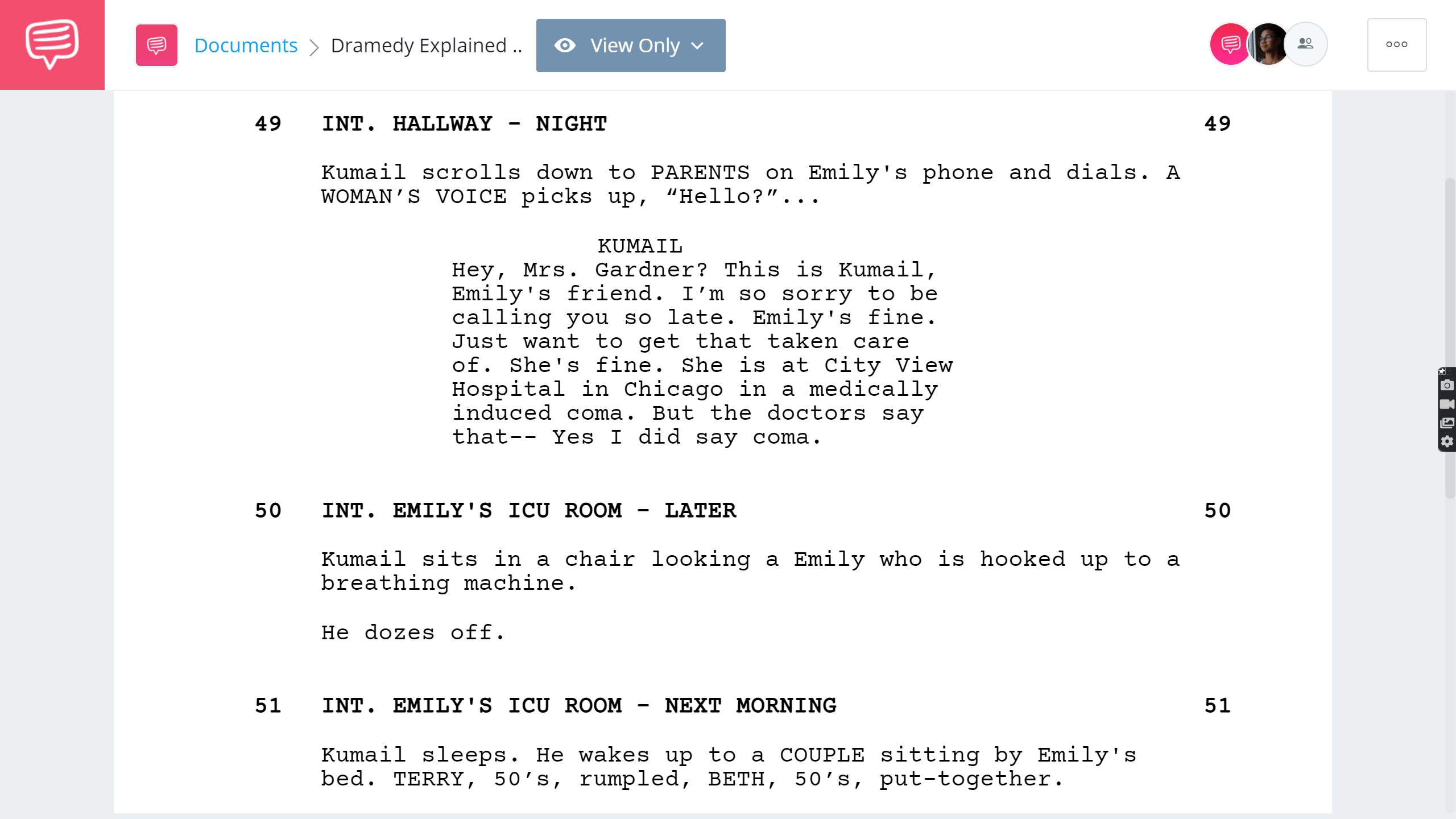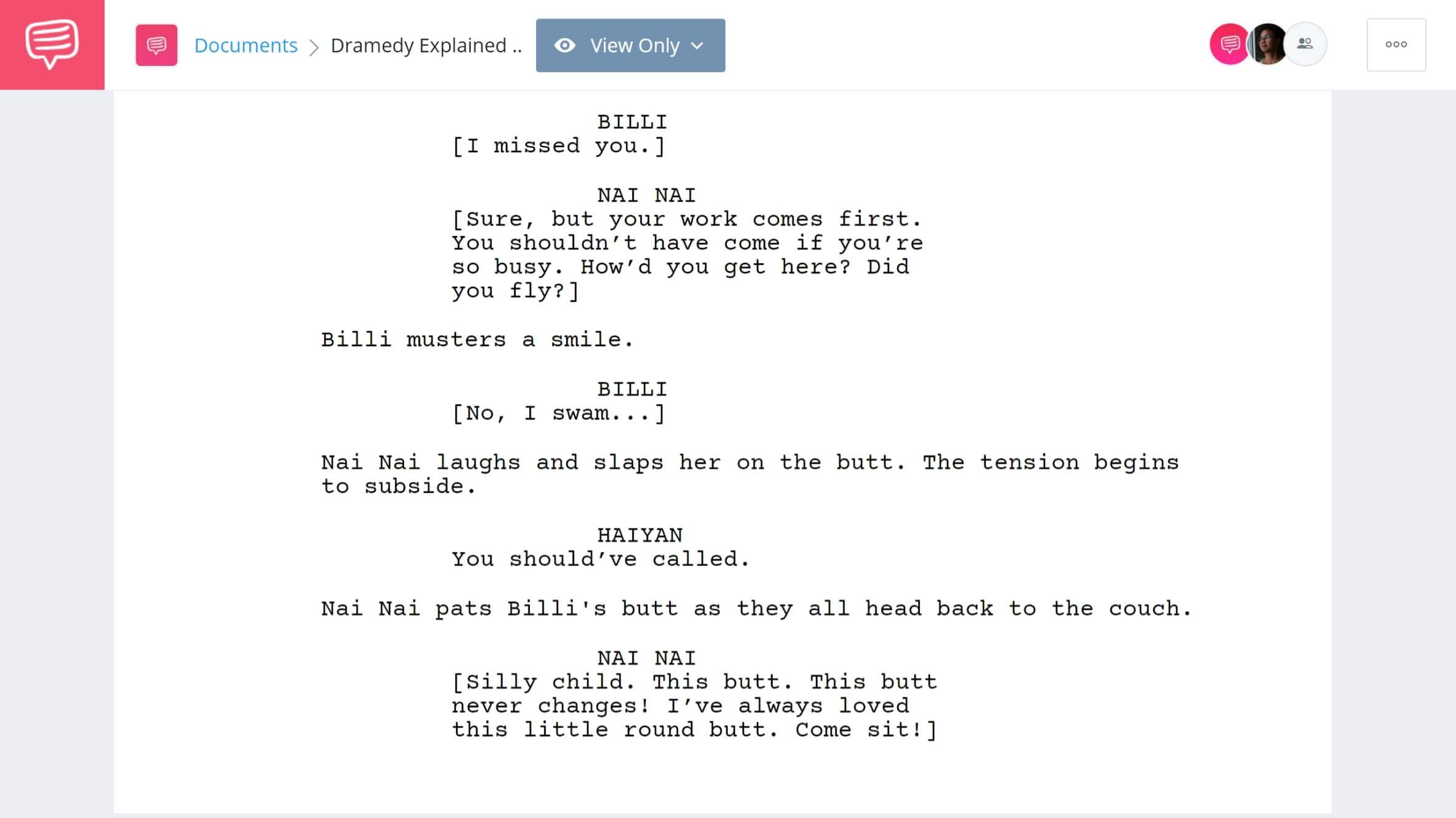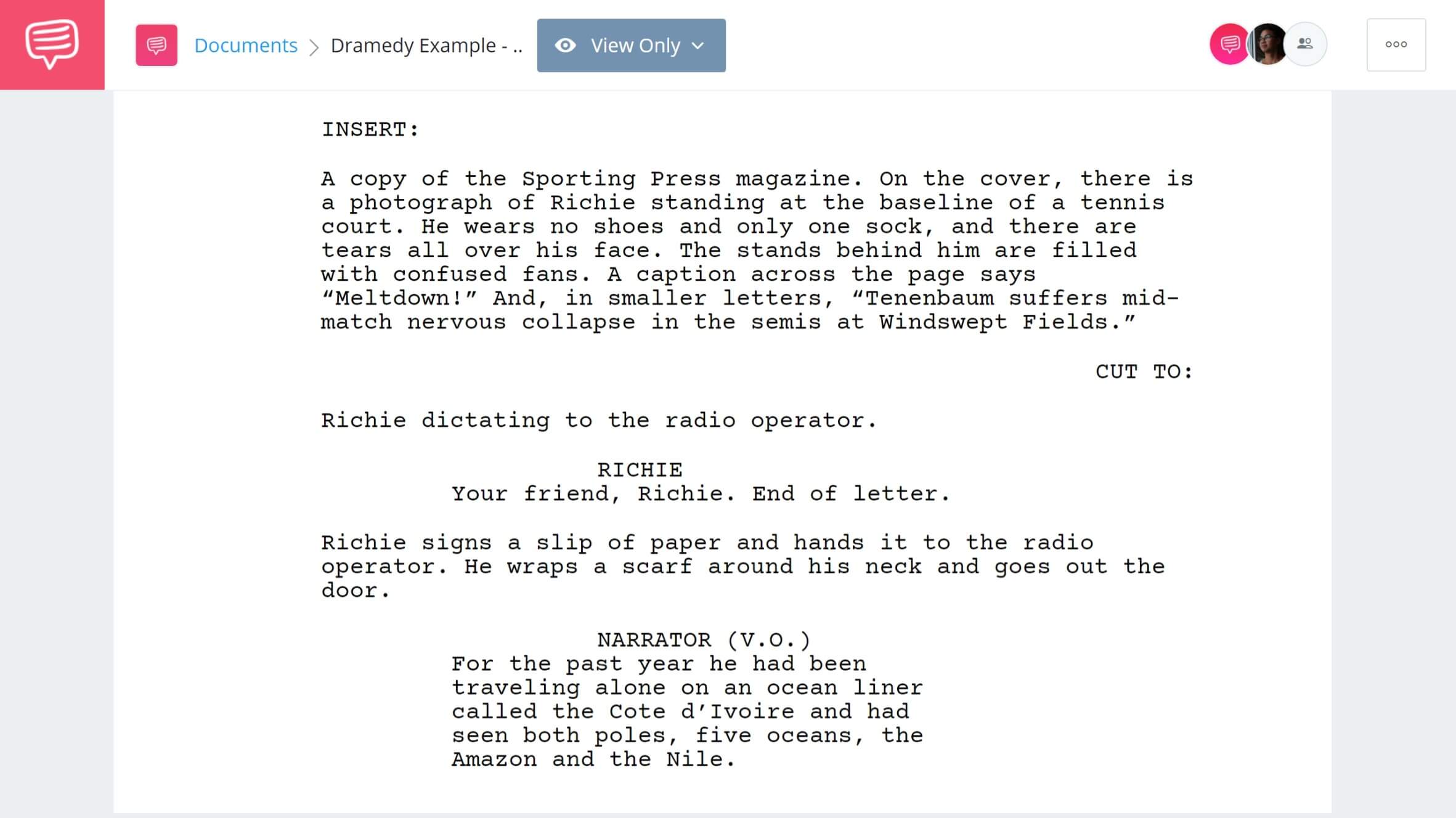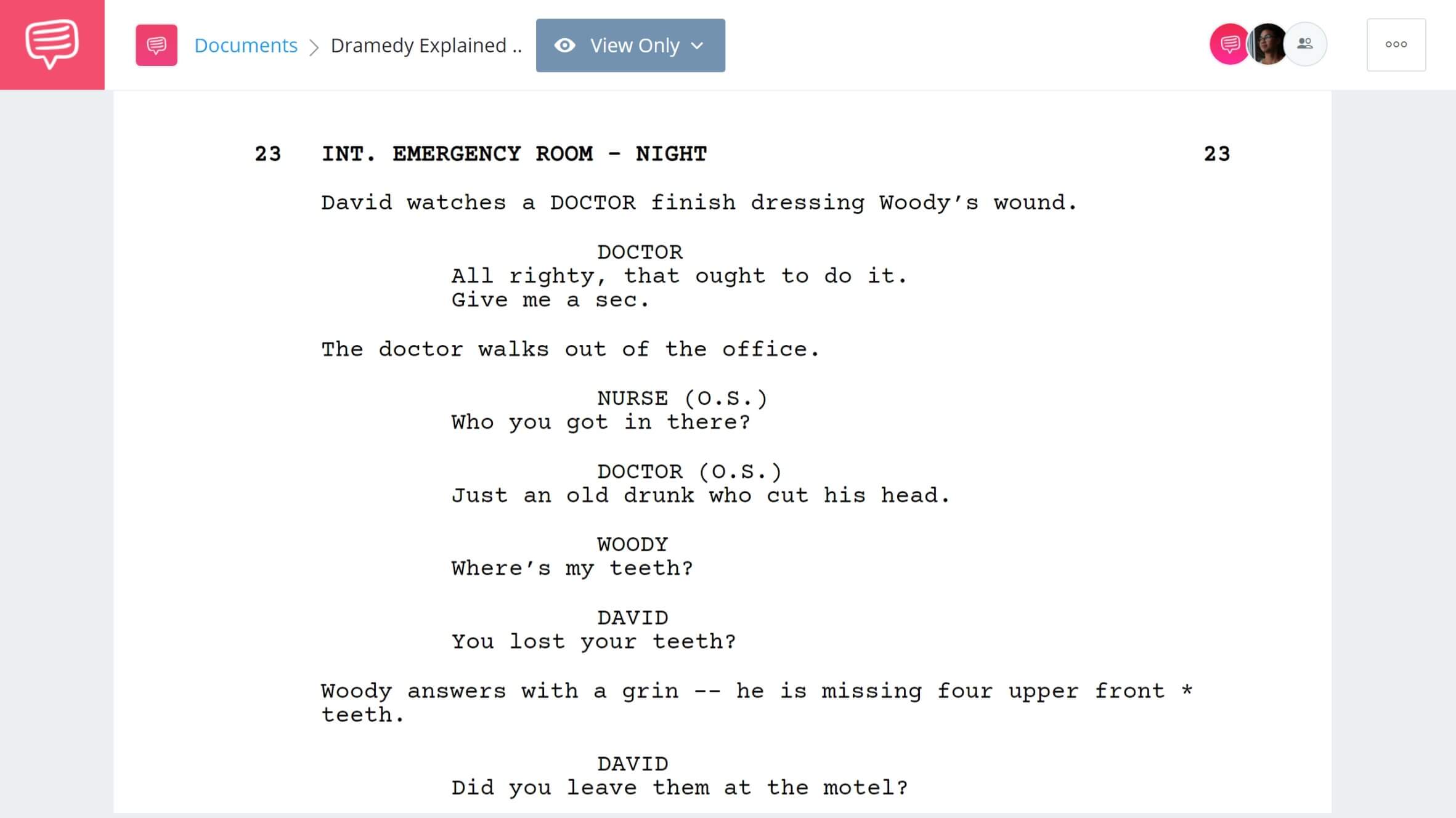For centuries, narrative works were strongly positioned to be one of two things: a comedy or a tragedy. Even these days, the two genres of drama and comedy are usually the most prominent or easiest to ascertain. Even if one has minor elements of the other, they can still exist as separate entities. Unless, of course, you’re talking about a dramedy. What is a dramedy, you ask? While it can be simplified as being a mixture of drama and comedy, we want to go in-depth with characteristics and examples. We want you to know what to look out for when you’re watching a dramedy and when you’re working on one.
Dramedy Definition
Dramedy: the best of both worlds
If we learned anything from Pixar's Inside Out, it's that joy and sadness are best when paired together. One cannot exist without the other. In many ways, that makes dramedy movies a "super-genre" where we get the best of both worlds. The tricky part is balancing both drama and comedy to find that perfect middle ground for each particular story. Let's see how that's done.
It’s often best to start at the beginning, so let’s cover the basic dramedy definition, as well as the most common characteristics of a comedy drama.
DRAMEDY DEFINITION
What is a dramedy?
A dramedy is a movie or program that balances the elements of a drama and a comedy. Also known as a comedy drama, this hybrid genre often deals with real life situations, grounded characters, and believable situations. The ratio between the drama and comedy can vary, but most of the time there is an equal measure of both, with neither side dominating.
Dramedy characteristics include:
- Realistic situations and circumstances
- Relatable and unpredictable characters
- Grounded narratives with character-driven plots
We are now going to cover the most basic and important elements of the comedy drama, while also providing examples from some notable dramedy movies. You can use these elements and examples as both how to identify dramedies and what to keep in mind when you’re writing the screenplay for your own dramedy.
Dramedy Settings
Topics of a Dramedy
Dramedies often cover topics that are familiar to everyone, regardless of their position in life. Serious topics, like divorce, illness, hardship, heartache, and so on, are usually what’s dealt with. Additionally, these topics can be fleshed out and have details added to personalize them.
A few recent dramedy movies that cover illness are The Big Sick and The Farewell. Aside from both using articles in their titles, both films are based on real experiences from the writers, although their handling and situations vary.
The Big Sick (which happens to also be one of the best romance movies) starts as a semi-standard romantic comedy that transitions into a more serious drama. Kumail is dating Emily, but they eventually break up; he later learns she has a life threatening illness.
Using StudioBinder’s screenwriting software, we can check out full screenplays for the movie’s we’ll be covering here. It lets us see scenes like this one, where we can see how Kumail tries to let Emily’s parents know about her situation, and how that results in a comedic moment.
What is a dramedy? • Read the entire script for The Big Sick
We can see a more obvious example of comedy in a later scene where Kumail, after an extremely stressful situation involving Emily and her parents, tries to order a burger at a drive thru and loses it. While the scene is funny, it’s sandwiched between more upsetting moments and underscores just how frustrated and upset Kumail is at this moment.
What is a dramedy? • Finding comedy in Kumail’s sadness
In The Farewell, the topic of the movie is laid out when lead character Billi learns from her parents that her Nai Nai has cancer. A serious situation that has them travel to China to spend time with her, since they are so certain she’s going to die. However, because no one tells Nai Nai, she just assumes everyone is visiting for a wedding (dramatic irony at its finest).
The scene below shows how Nai Nai’s ignorance (the comedy) plays with Billi’s very tense resistance to displaying intense emotion (the drama).
Dramedy movies • Read the full scene from The Farewell
Both The Big Sick and The Farewell balance their very serious topics with comedic moments throughout. This helps drive home a belief some people have about dramedies: they’re reflections of reality. Real life is not strictly a comedy or a drama for most of us; it’s usually a combination of the two.
Related Posts
Dramedy Characters
Characters in a Dramedy
Like any drama or comedy, they are nothing without their characters. Dramedies do not rely on high concepts, like an island terrorized by dinosaurs or a shark. Establishing the topic of your comedy drama is important, but you need to make sure your characters can carry that weight.
The Royal Tenenbaums (which primarily deals in the topic of family dysfunction and is one of director Wes Anderson’s best movies) might be one of the most obvious examples of this because the characters are incredibly distinct. On top of each character having a sort of “uniform” that they always wear, each one gets time dedicated to them near the film’s beginning, establishing their voices and personalities.
Here's a segment that introduces Richie's character. Pay attention to the details that combine drama and comedy into his overall characterization. You can also read the entire Royal Tenenbaums screenplay for the full effect.
Dramedy movies • Read the entire scene
But for all their fanciful looks and the perfectly matriculated and planned out info, these are extremely flawed characters. Their relationships are strained, they have breakdowns, and they seem unable to breakfree from their pasts. It may look colorful, but these are issues just about anyone can relate to.
A more recent example of this style of characterization would be Jojo Rabbit that uses the backdrop of the second World War. The film tackles the serious issues of not just anti-semitism and extreme prejudice, but learning to grow from a child into an adult. And it achieves this by having well-written and identifiable characters who enter and exit young Jojo’s life.
You can see examples of this, as well as how the film uses its comedic trappings to create a serious dramatic moment, in our own breakdown of Jojo Rabbit (which is FULL of spoilers). Read the full Jojo Rabbit script while you're at it.
The video below covers how the film and the screenplay helped create a true gut-punch.
How Jojo Rabbit packs a punch • Subscribe on YouTube
While the The Royal Tenenbaums and Jojo Rabbit are a bit more exaggerated than your average dramedy, they help drive the point of characters and their characterizations being vital to dramedies. Not only that, but these unique and sometimes comedic characters are still dealing with very serious topics, which often contributes to the balance of drama and comedy.
Dramedy Plot
Situations in a Dramedy
So you know what you want to cover and you’ve created your characters. From here, you just have to set up your plot and write out your narrative.
While it’s easy to say that the plot is just combining your main topic and characters, it also means turning those topics into situations for your characters to engage with. These are usually obstacles they have to face and problems they have to take on. And yes, virtually every story is about characters and situations, which means you have to make those situations make sense in a dramedy setting.
Nebraska is driven by a comedic situation: eccentric old father Woody convinces his rational son David to join him in journeying from Montana to Nebraska to collect “prize money,” even though the son knows it’s a scam.
David eventually concedes and drives his dad, while making some stops along the way. While the “prize money” is your inciting incident, a series of situations occur throughout, such as Woody succumbing to his interest in alcohol at random moments.
The scene below is the result of this going too far, resulting in an injury, but of course, it’s presented in a dry comedic fashion.
Dramedy movies • Read the full scene here
Possibly the most metafictional example here comes from Stranger Than Fiction, the dramedy that showed Will Ferrell can do a lot more than yell and run around naked.
Harold Crick (Ferrell) leads an extremely ordinary and mundane life, until he starts hearing someone narrating it (and states he’s going to die). He can’t place the voice or figure out what’s going on, so Jules Hilbert, professor of literature (Dustin Hoffman), helps him out.
The scene below shows their first meeting; while Harold is serious and bummed about the unseen narrator and his imminent demise, the professor is calm, neutral, and soon after very interested in Harold’s situation, resulting in a subtly comedic interaction.
Drama and comedy • Harold and Jules meet
Harold’s situation is pretty hilarious, but it’s also pretty serious, since it deals with his mortality. It also results in a variety of other situations, such as Harold freaking out at work, finding ways to keep the voice from narrating, and ultimately inspiring him to do things he would not have done otherwise.
In short, he learns to live his life and not let outside forces keep him from pursuing true happiness.
Both Nebraska and Stranger Than Fiction take serious situations and find the comedy in them, which can sometimes make a topic easier to stomach or understand. In these two cases, it’s the genuine issue of wanting more out of life, and that any potential possibility of change can inspire you to do something about it.
Related Posts
UP NEXT
What is Black Comedy?
Now that we have covered dramedies, take a look at what makes a black comedy. A twisted cousin to the comedy drama, our article looks at what makes a dark comedy, its history, and examples from the script and screen.




